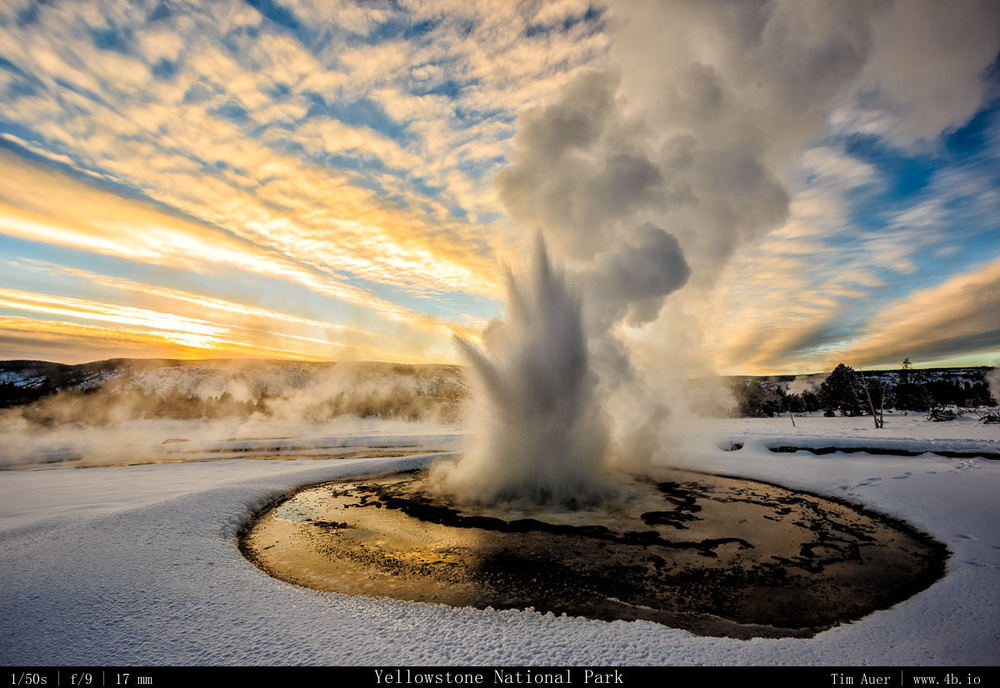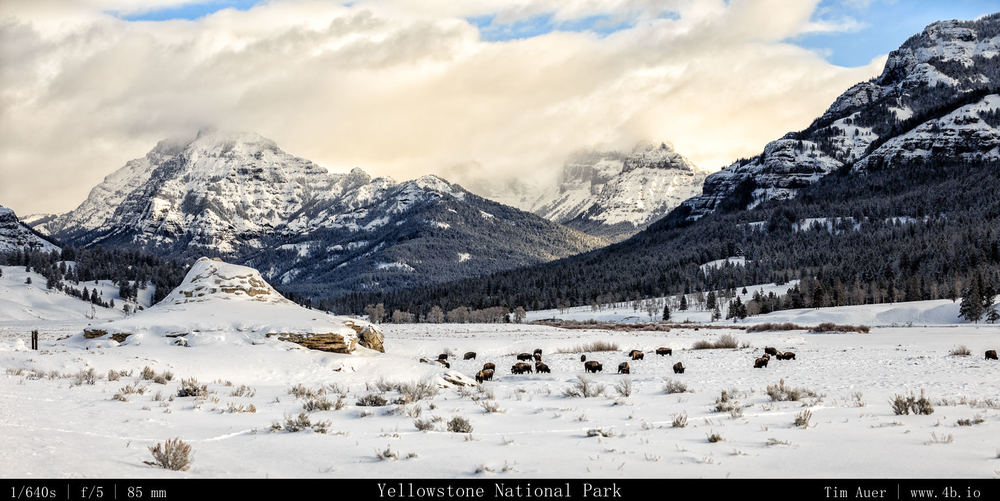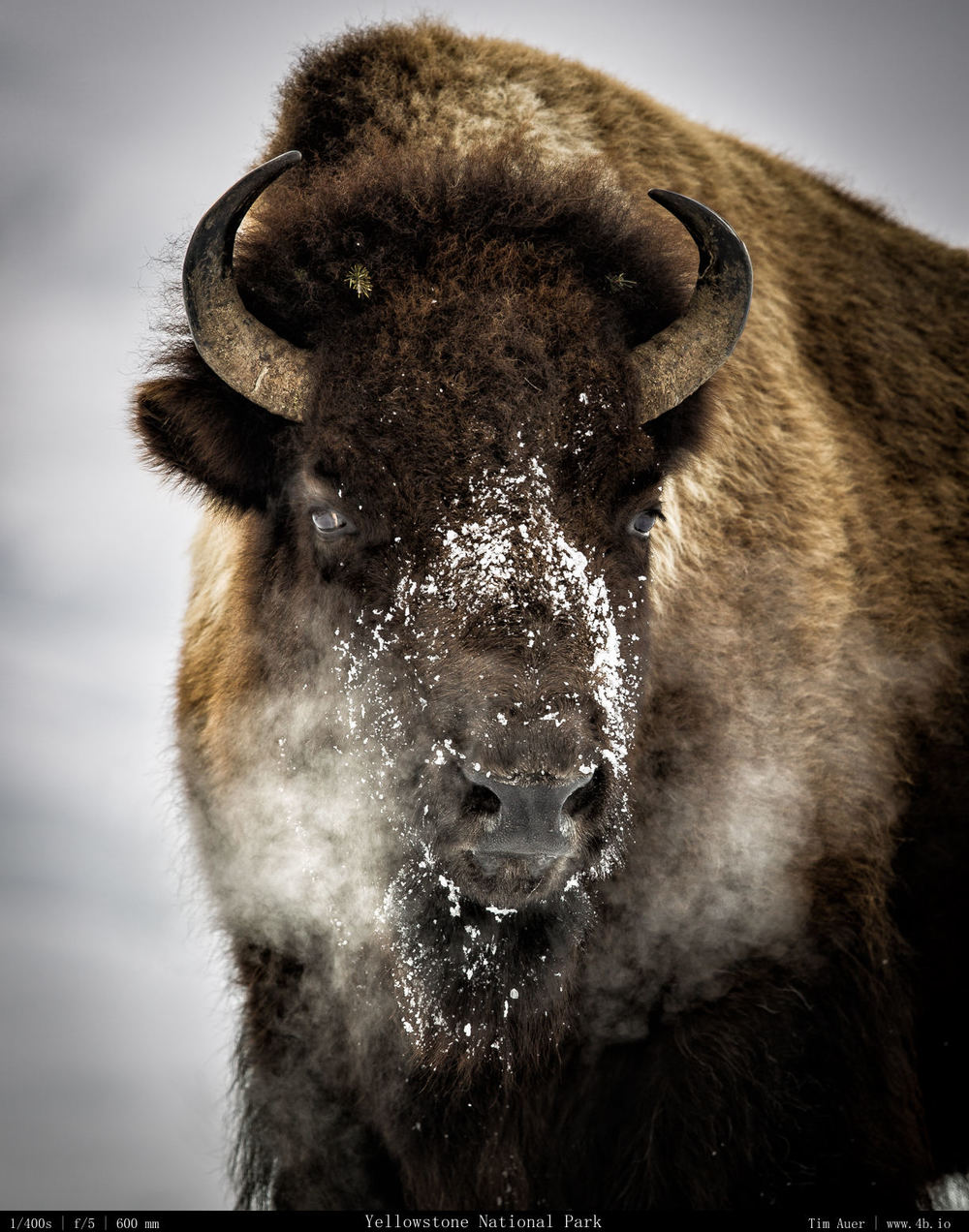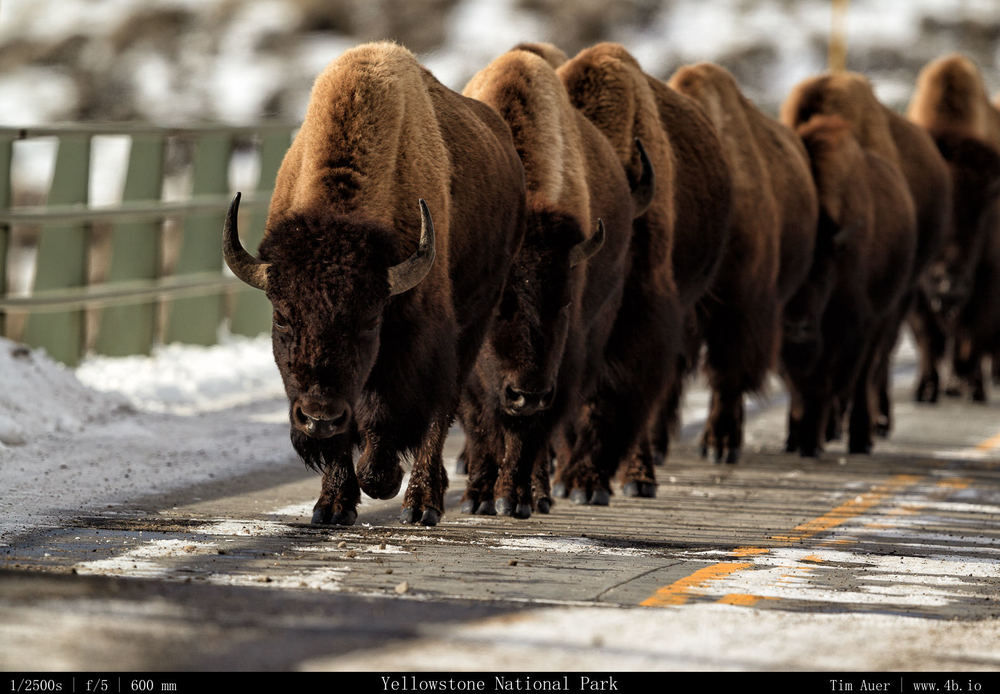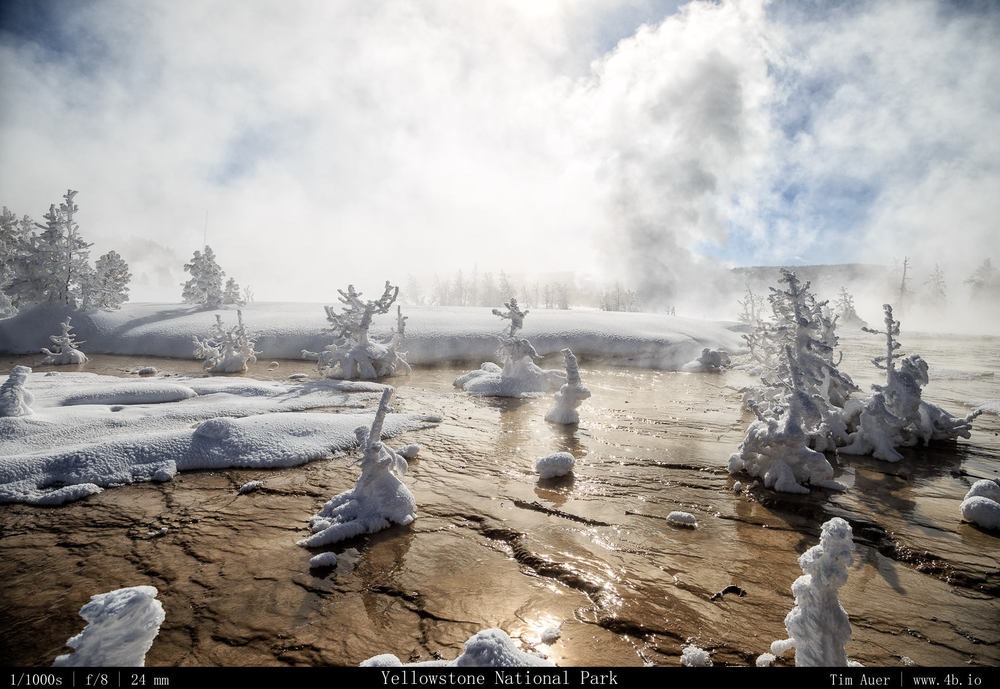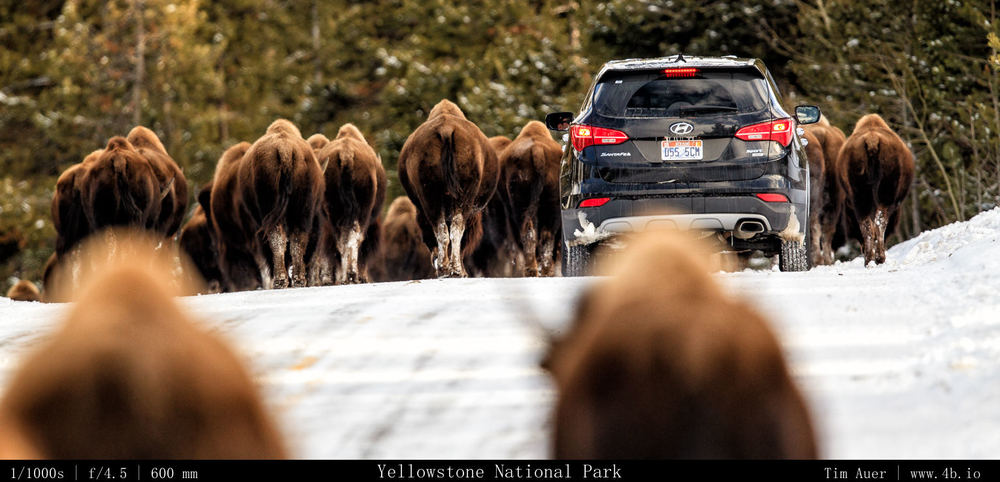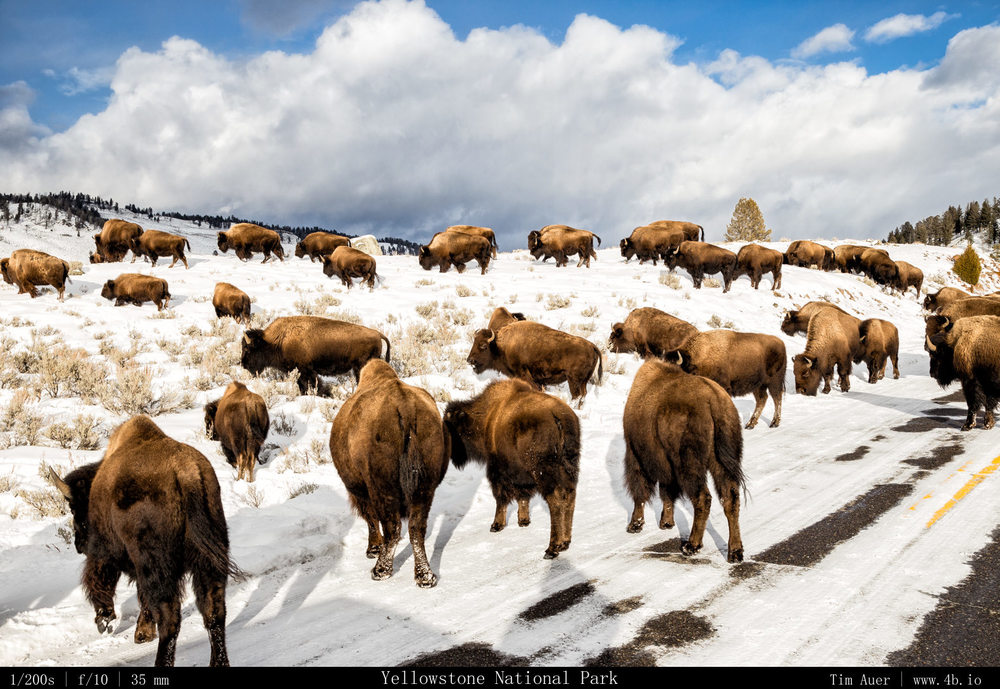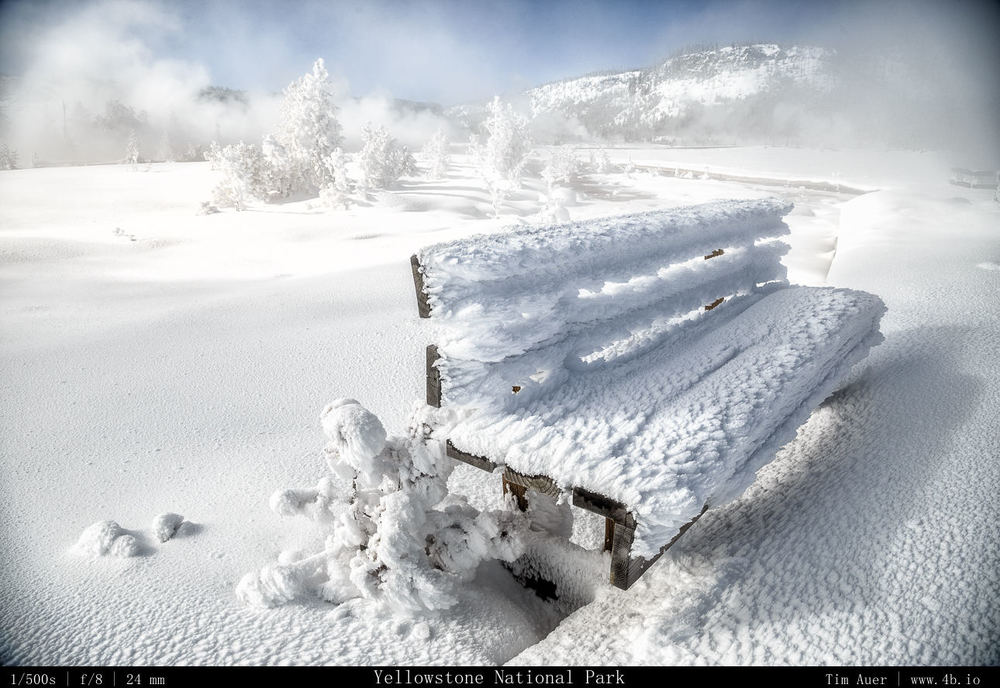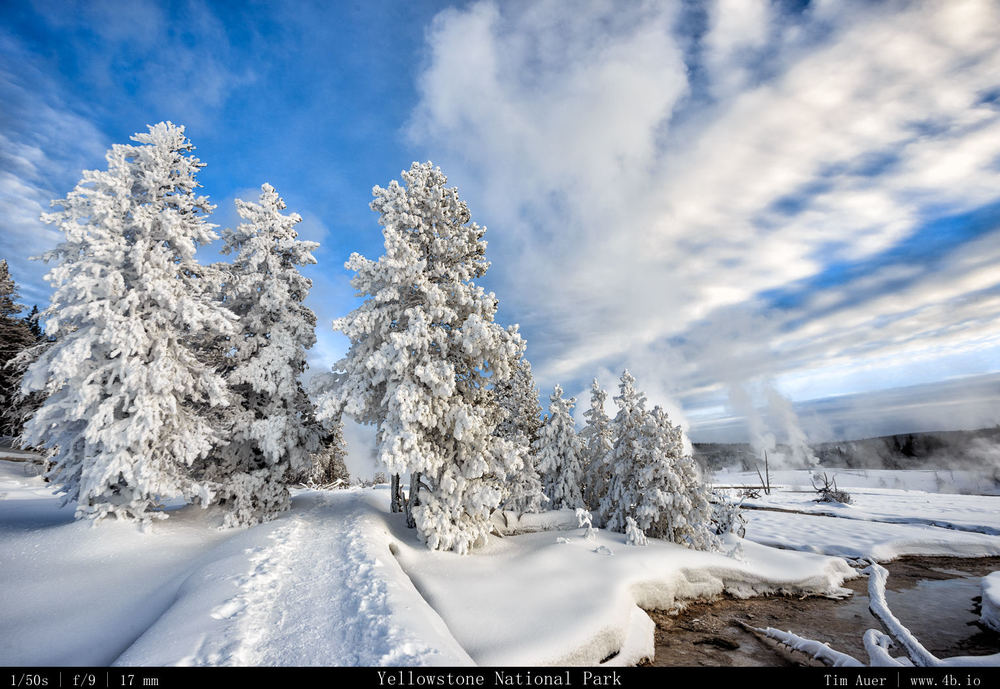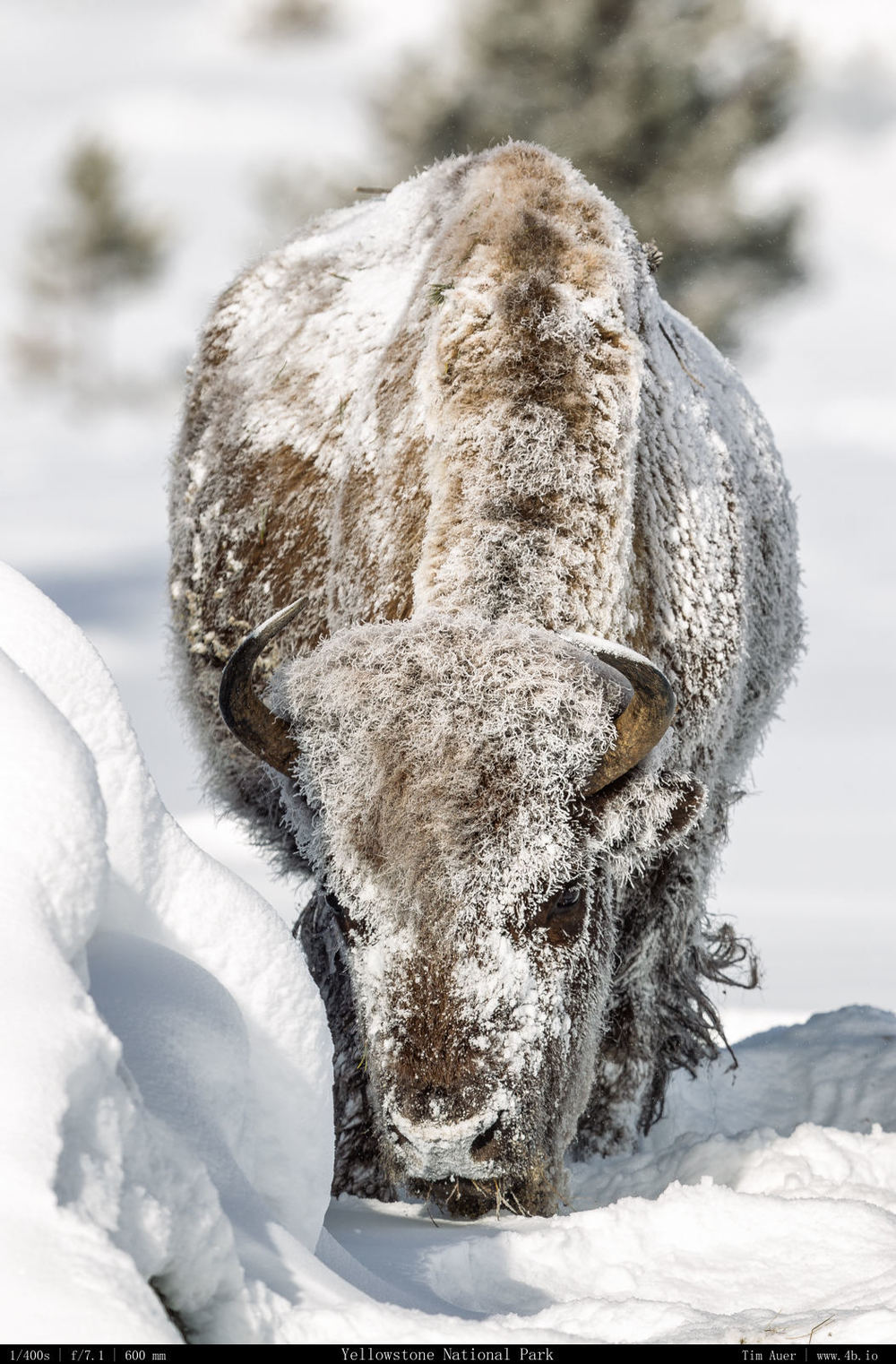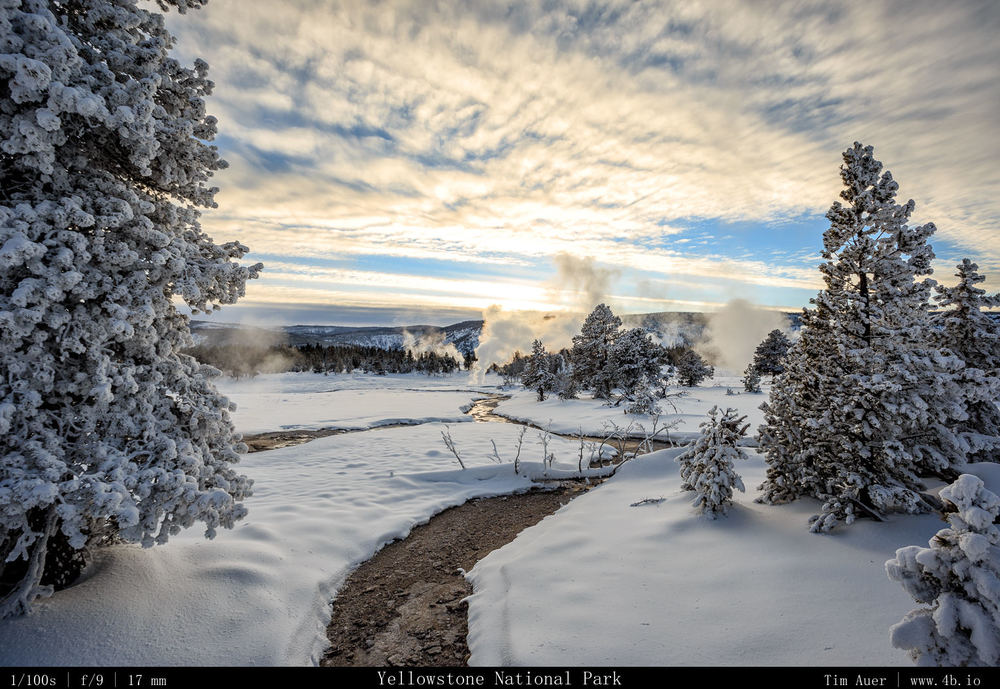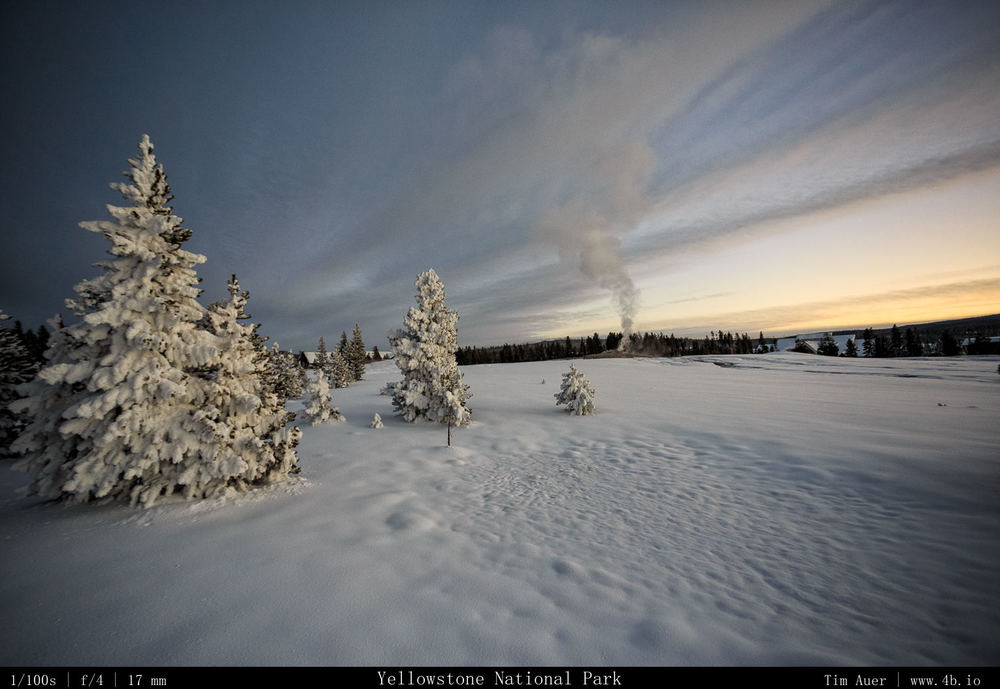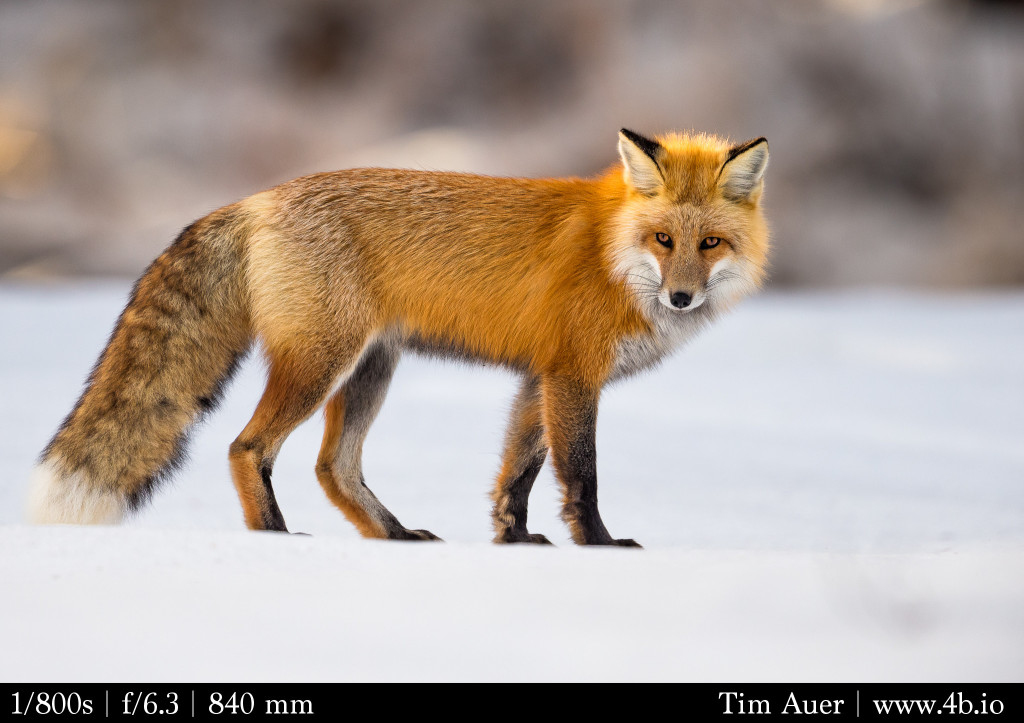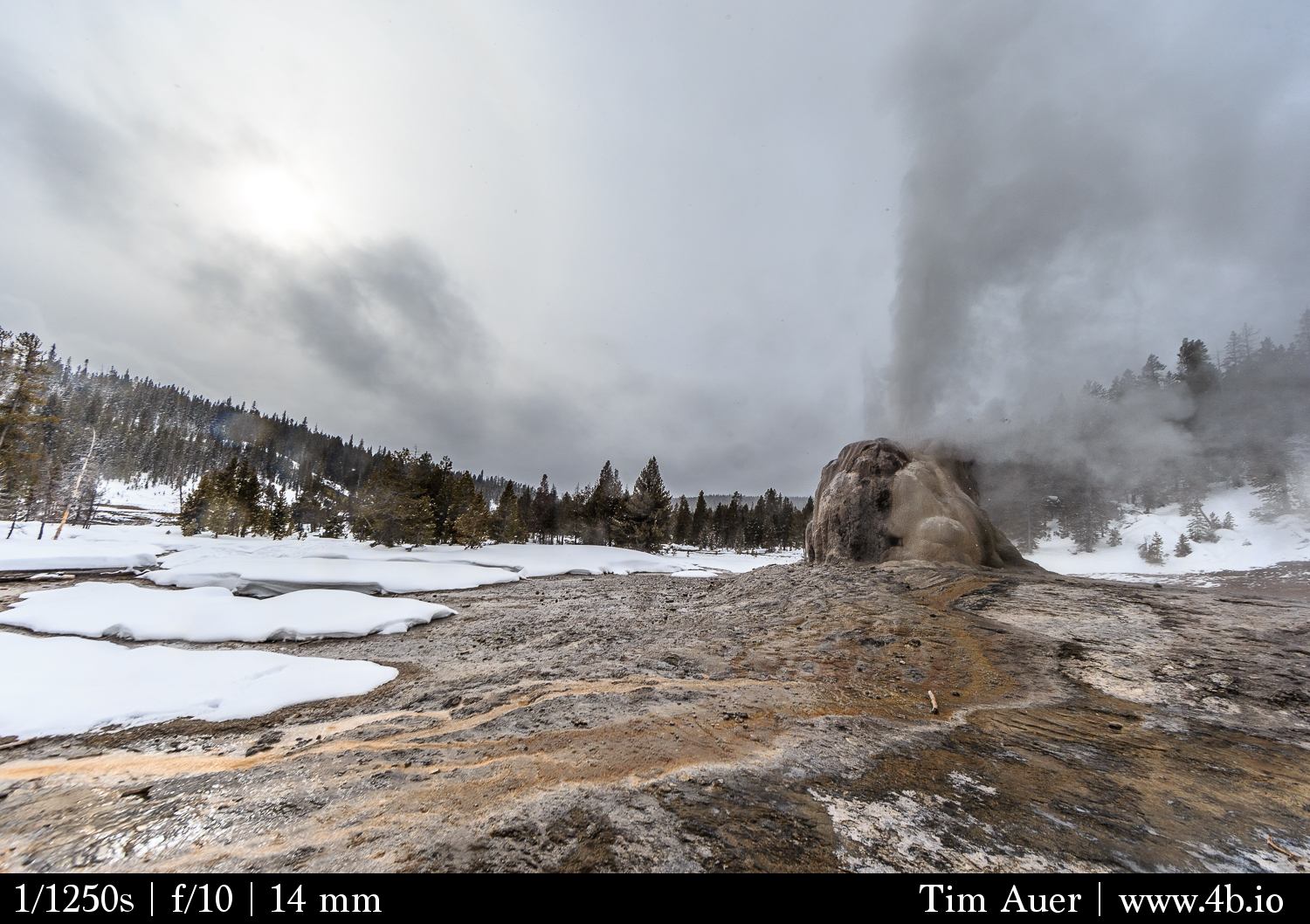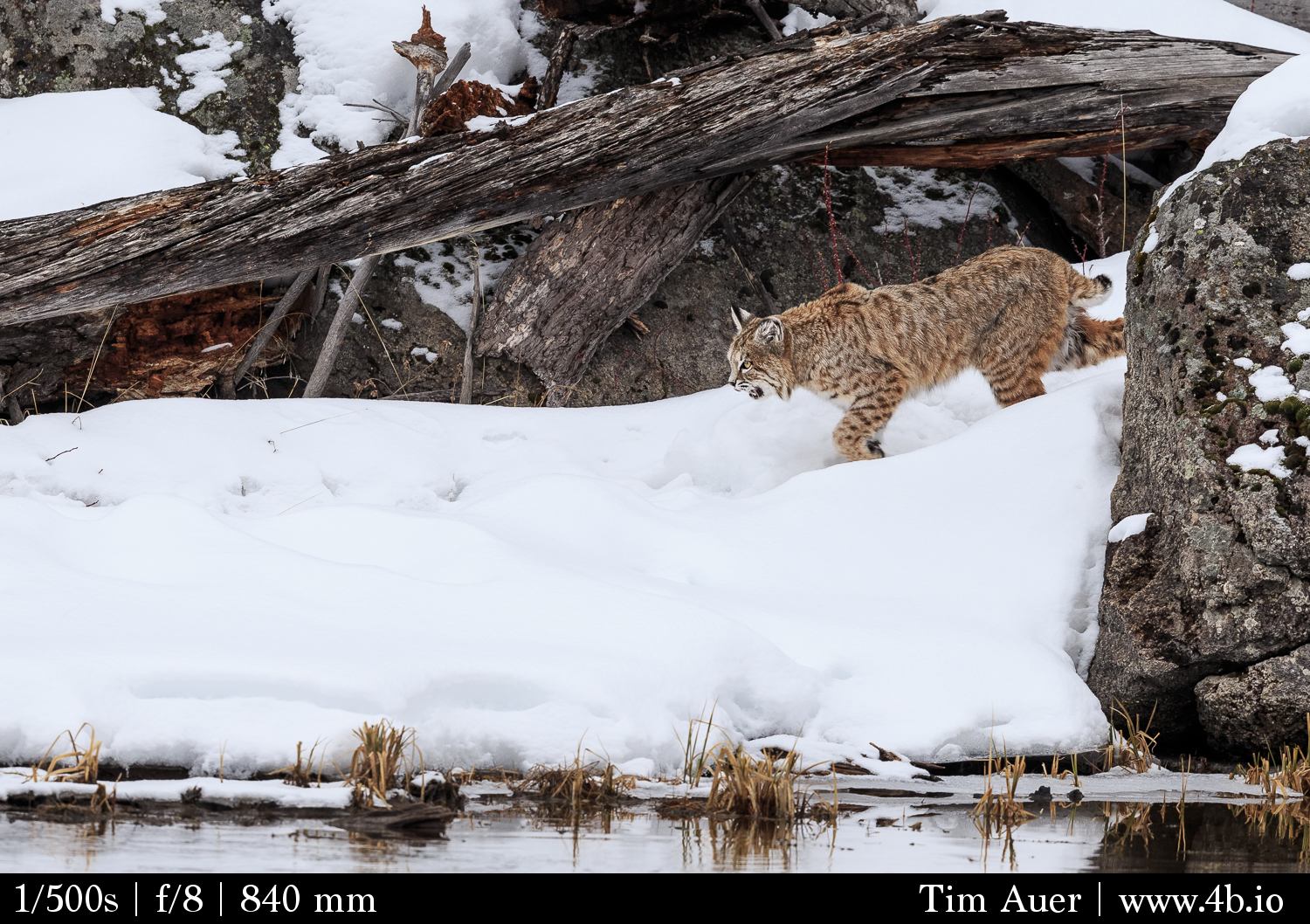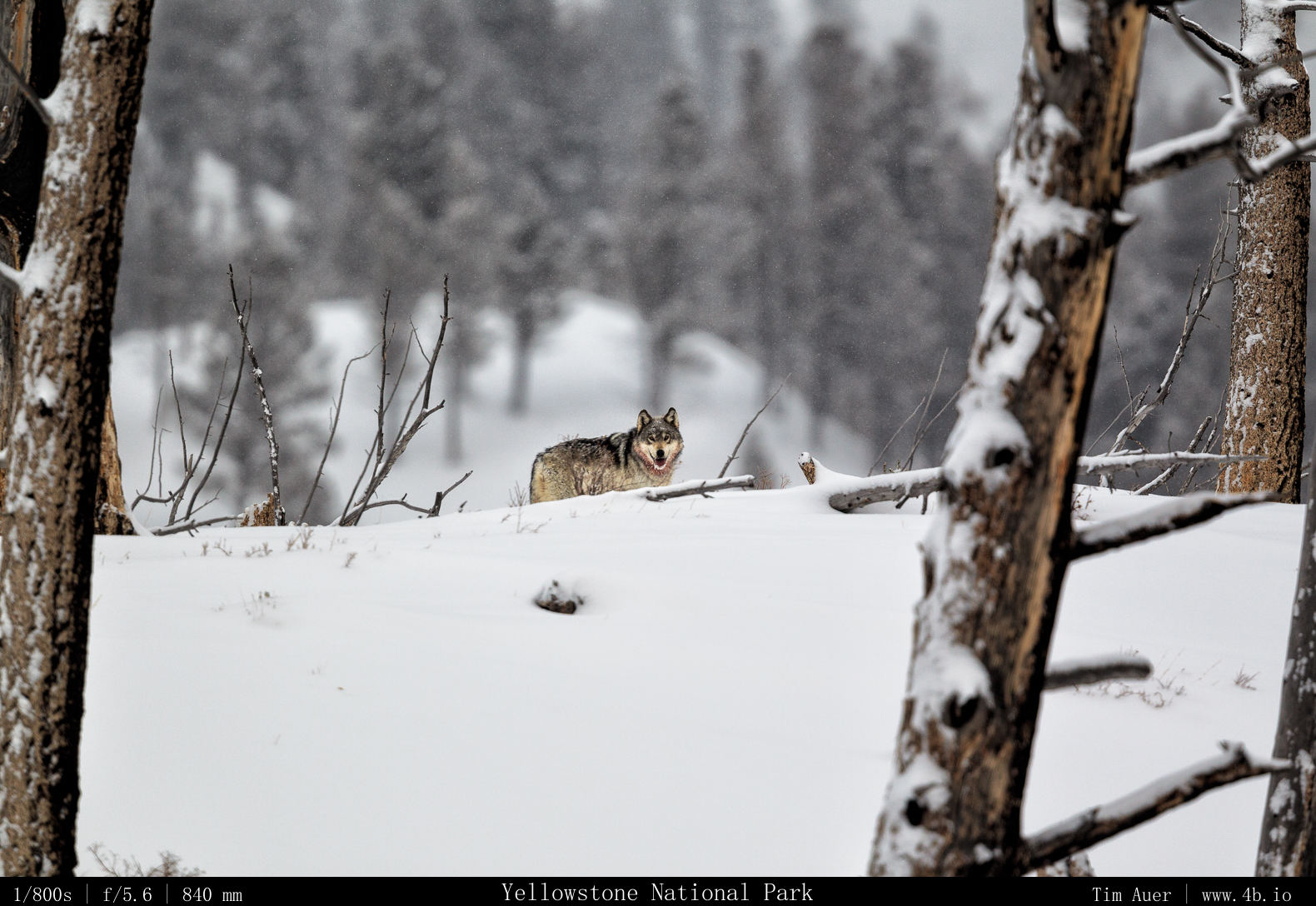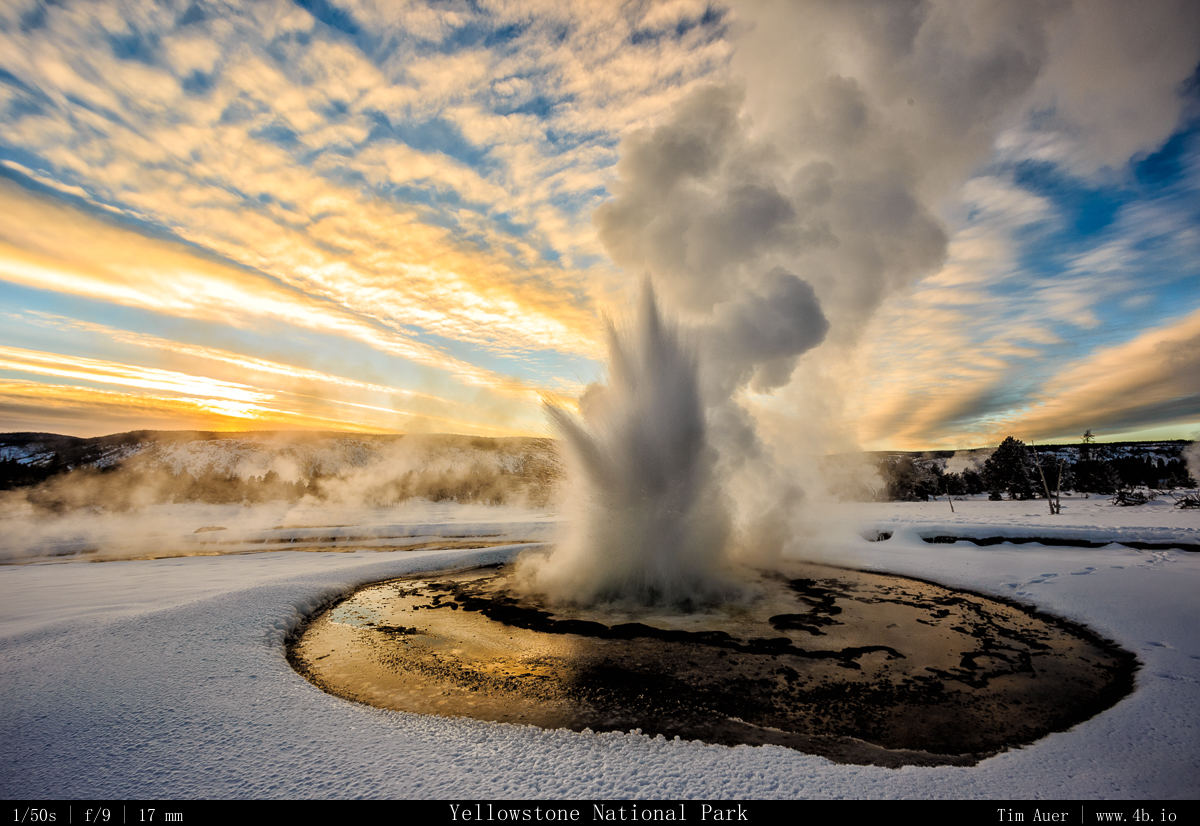Eye to Eye: American Marten
I am proud to announce that I received Highly Honored in the Wildlife category of the 2015 Windland Smith Rice International Awards Photo Contest by Nature’s Best Photography. This photo of an American Marten is one that I am particularly proud of capturing; and to receive this distinction makes the experience even more special to me. On top of that, getting this news is a great way to celebrate my 32nd birthday!
Please read the description below for more details behind how this photo was created:
——
Eye to Eye: American Marten

American Marten
Martes americana
Yellowstone National Park, USA
By Tim Auer
Mountain View, California, USA
www.4b.io
The story:
Look closely into this marten’s eyes. If you look carefully, you can see the reflection of the forest scene before it.
A curious and playful species, the american marten is not an easy animal to photograph. It is small and fast with an ability to vanish as quickly as it appeared, and certainly won’t wait for you to switch to your telephoto lens. If a wildlife photographer wishes to capture this species in its natural habitat, s/he needs to be prepared upon encounter..
As is typical of special wildlife photos, this image is the result of preparation, and a bit of luck. While snowmobiling through Yellowstone, I stopped for a break near the Swan Lake Flat. Fortunately, my camera setup was optimal for such an encounter: 600mm F/4 +1.4x Extender, giving 840mm focal length. I had driven the snowmobile with this camera+lens on my lap all day, which, given the size of this kit, is no easy task to do while handling a snowmobile. But having it immediately available during the few brief seconds the marten was in sight made this shot possible. The marten bounded with ease on top of the 4 ft/1.5m deep powder snow, and appeared to play peekaboo from behind trees, while I postholed clumsily behind it, keeping the lens barrel above my head to keep snow out. It was not easy to get into shooting position with such deep snow, in fact it was exhausting. But as I crouched deep in the snow, at eye level with the marten while flakes of powder snow fell softly, I clicked this sharp result.
The American Marten is classified as a furbearer by most of the state wildlife agencies in its distribution, but fortunately, several of the states it calls home do not have a trapping season for it. Still its presence is an important indicator of the overall health of its forest ecosystem. It requires a rather large home range for a mammal of its size, and its home range has been shown to vary as a function of prey abundance (Thompson and Colgan 1987) and habitat type (Soutiere 1979). In clearcut areas it requires 63% more area than it does in uncut or sustainably harvested forest land.
Outside of those in the fur trade, not many people are familiar with this member of the weasel family. In fact, many people, when they see this photo, have confused it with a baby fox. I hope by showing this snow-moustached portrait of the American Marten in gentle natural lighting, people will begin to recognize the species in a new light.
Soutiere, E.C. 1979. Effects of timber harvesting on marten in Maine. J. Wildl. Manage. 43:850-860.
Thompson, I.D. and P.W. Colgan. 1987. Numerical responses of martens to a food shortage in northcentral Ontario. J. Wildl. Manage. 51:824-835.
GEAR:
Canon EOS 1D Mark IV, Canon EF 600mm f/4 L IS II USM, Canon Extender EF1.4× III
1/160s; f/5.6; 840mm; ISO200
Post Processing done using Lightroom 5.7.1
Feb. 8 2014
Backlit Red Fox, Lamar Valley
Backlit Red Fox, Lamar Valley.
Yellowstone National Park, Feb. 2015.
This red fox was mousing in the first brilliant sunrise light I saw in the last 9 days in Yellowstone. When this photo was taken, the fox had retreated into the woods, and only a bit of this morning light kissed the hair on the top of its head. #yellowstone #lamarvalley #redfox #fox #wildlife
Lone Star Geyser Erupting
Lone Star Geyser Erupting with the sun poking through the clouds at 14:04 on Feb. 4, 2015, after a ski drop from near the continental divide. This is one explosive geyser. Its firehose nozzle shape forces the water from below with high pressure force. The fallout fell down in the form of a geyser shower, soaking me and my camera. You can see a droplet of the geyser’s spray on the front element of my lens on the left side of the image.
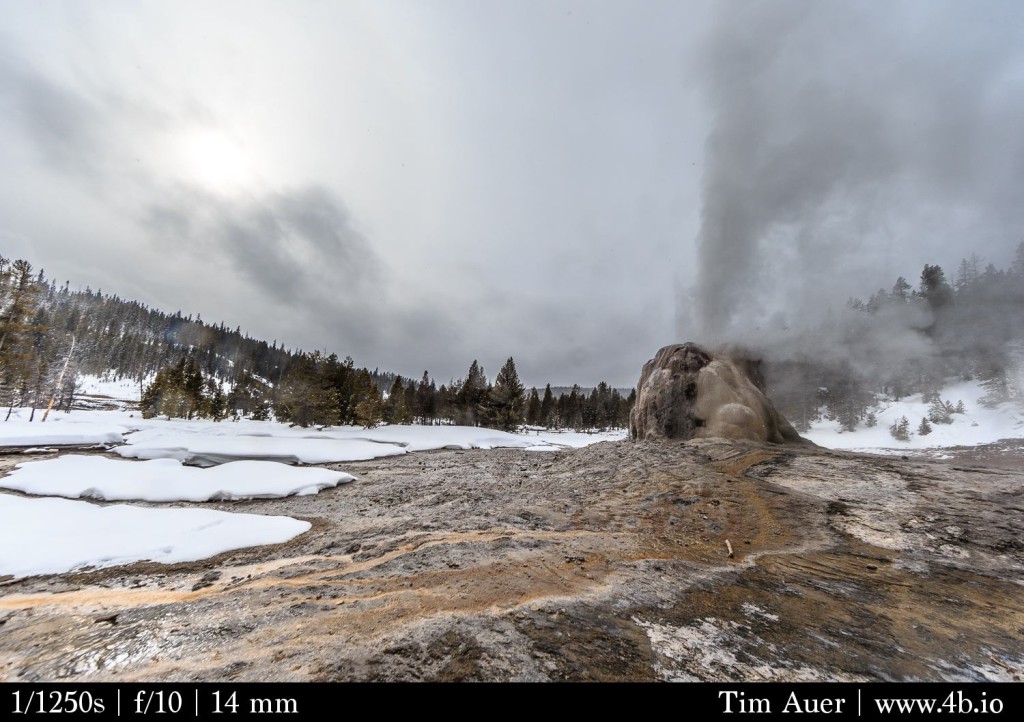
Yellowstone National Park.
Seven Mile Bridge Bobcat 2015
Seven Mile Bridge Bobcat delivers again in 2015…
…and was quite active today, forcing me to trudge through deep snow to keep up with him as he made his way up and down the opposite river bank. He went after a muskrat 10 minutes before we arrived, splashing into the Madison River. I arrived to see him preening his wet coat, only to be attacked by a coyote, which tree-ed the cat. Then saw him stare down some golden eyes (who saw him and changed their direction), and finally multiple successes in the mousing effort. The warmer temperatures this year made for sharper photography, because there wasn’t as much steam coming off the river to soften the image, but this “heatwave” made things a lot warmer when post-holing.
Yellowstone National Park, Madison River #7milebridgebobcat #bobcat#yellowstone
Yellowstone Winter 2014: Canid
Update May 2017
A few weeks ago, when I heard the death of the 12 year old Canyon Alpha female, I held hope her injuries had been natural, not due to man. My disappointment was palpable when I learned she had in fact been shot. The bullet didn’t immediately kill her. The shooter only managed to fatally wound her. She still clung to life but, after surviving 12 years in Yellowstone’s unforgiving wilds, she was euthanized due to the injuries. Nature is brutal and a comfortable death is not expected for a wild animal, but it is a shame how this iconic wolf met her demise.
As the first wild wolf I ever saw, alongside her longtime mate, the Canyon pack Alpha female held a special place in my heart.
See below for album that includes photos of the White she wolf of Canyon Pack.
Dogs of Yellowstone: Wolves and Coyotes
I had several first time wildlife encounters on this trip. At the top of that list were wolves. A wild wolf is not an easy animal to see in its natural habitat. In fact, the primary goal of last year’s winter trip to Yellowstone was for wolf photography, and I didn’t see a single wolf on that trip. It serves as a costly but useful reminder that in a wild place, the wildlife are in charge. And that you need to adjust your approach to increase the likelihood of success of finding a given animal. Fortunately, this trip was different, not only did I see wolves, I saw lots of them. A lot of that had to do with spending more time in the Lamar Valley, having a vehicle, making better connections, and weeks of research to prepare.
Not only are wolves difficult to spot, they are even more difficult to photograph. As an intelligent and alert species, they are naturally wary of humans and keep their distance. On top of that, the wolves weren’t particularly active when the light was abundant. In fact, most of my sightings were in the hour before sunrise and the hour after sunset. In other words it was usually dark out when I saw them. I was forced to shoot with my lens wide-open and push the ISO to 1600, 3200 and in some cases 6400. The rest of the trip I was rarely above ISO 100.
But the first wolf encounter is something that resonates deep inside the human animal. Before seeing them, you first hear their howls. Long, deep cries that carry over long distances. Echoing through the valleys and off the mountains in the dark and cold morning twilight. The sound is primitive and shivering to the spinal column. The cries are answered by other wolves, but its not clear where they are. You know the general direction in which the sound originated, but it is difficult to pinpoint an approximate location. All you see are trees, snow, and shadows, each which is fair game for the wolf. And then all of a sudden out of the corner of my eye, and not in a location that I expected, a gray wolf is seen bounding through deep snow across the top of a ridge with another wolf following….
The day (my second in the park) was off to an exciting start! Not only had I seen my first wolves, but the previous day was productive, yielding many usable photos of bison, elk, sheep, and coyote. Well it turns out that the highlight of Day 2 was seeing the wolves at sunrise. The weather was windy and snowy for most of the afternoon, of all the animals in Yellowstone that day, it was the wildlife that seemed to have better judgement, by staying bedded down all day. There were barely any bison to photograph. Later in the day, we became aware of an injured bull elk on a cliff overlooking Soda Butte. It was reported that wolves overnight had ripped open his left rear leg and backed him into the cliff. The mortally wounded elk managed to fight off his attackers through the night and remained on the cliff, alive, till the following afternoon. It is not clear why the wolves left their prize unattended. Likely the elk’s antlers behaved like a bayonet, and gave him the advantage in the cliff’s close quarters. But the wolves, as is often the case, appeared to have a plan and weren’t gone for good. In fact, it was like they simply “put the elk in the fridge” and would return at a less risky time, after he had bleed out.
Later in the week, we got even closer to the Canyon pack between Mammoth Hot Spring and the high bridge heading out towards Lamar. We tracked a lone gray wolf with a bloodied throat along a ridge by Blacktail Creek. It was making its way back and forth across the road. It was not clear if the blood was from feeding or its own. Afterall, it was the start of mating season and this lone wolf may have been injured by the pack’s alpha male. Lastly, on this day we were fortunate to see a pack of wolves, including two coupled alphas on the start of mating season. This pack was seen over 2 miles away, and the photo of this included here was on 1200mm focal length on a 1.3x crop body, giving 1560mm of optical reach, furthermore I cropped it by 100%, which means the equivalent zoom on this photo is approximately 3120mm. A lens of this size would be extremely difficult to handhold, as it would probably be 10 feet long and weigh up to 500 lbs. The wolves were far and it goes without saying this photo has minimal photographic merit. I just thought it was interesting to have a single photo of 7 wolves.
Coyotes are quite prevalent in Yellowstone in winter, frequently misleading visitors into thinking they have spotted a wolf. As you can see by two of these photos, some coyotes suffer severe cases of mange and have lost significant amounts of hair. This an extremely uncomfortable and possibly deadly disorder for these animals when the temperatures drop to -56F like it did during our visit there.
Here is a huge dump of the various “dog” photos from Yellowstone….

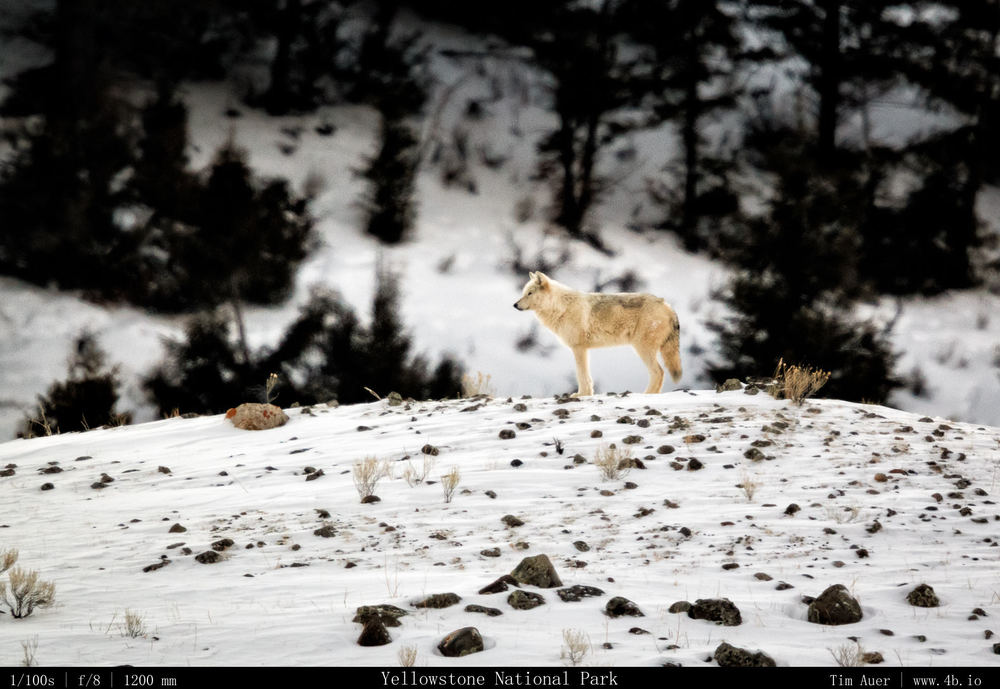
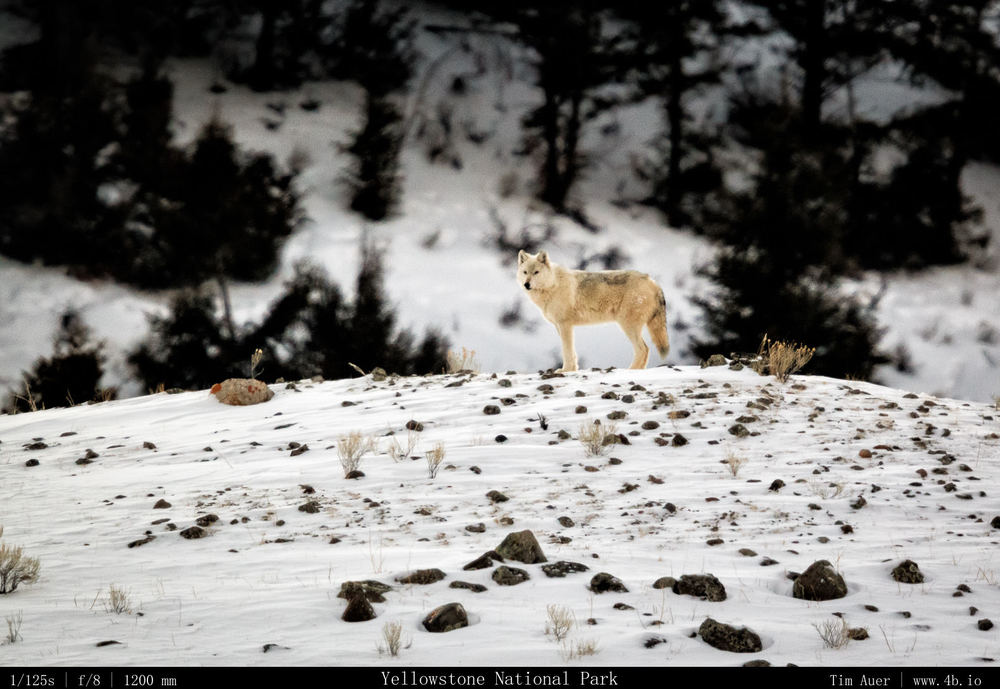


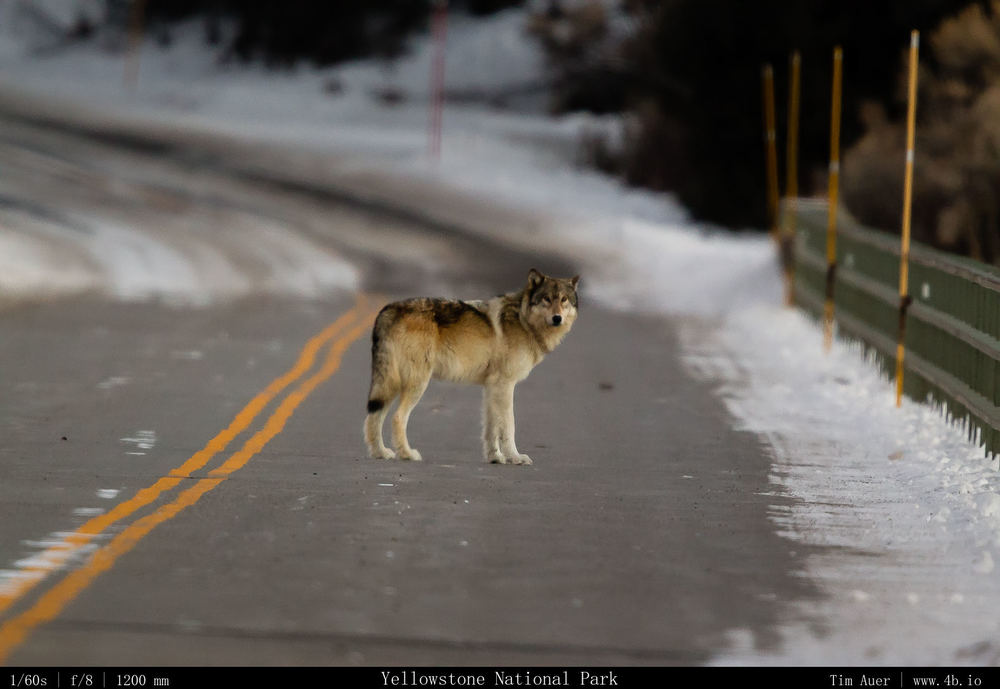
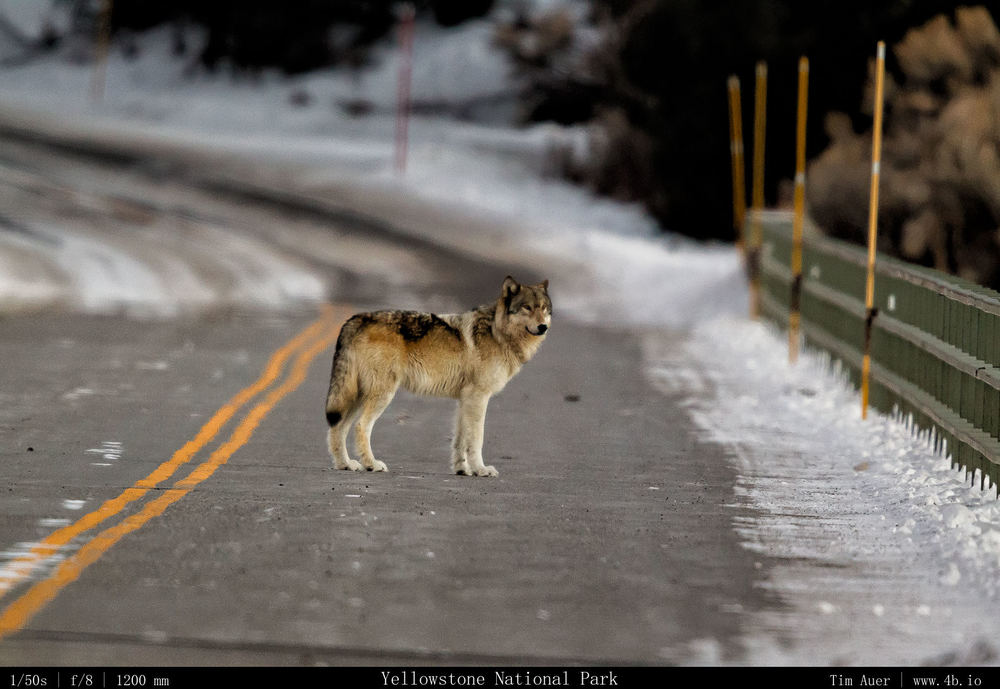



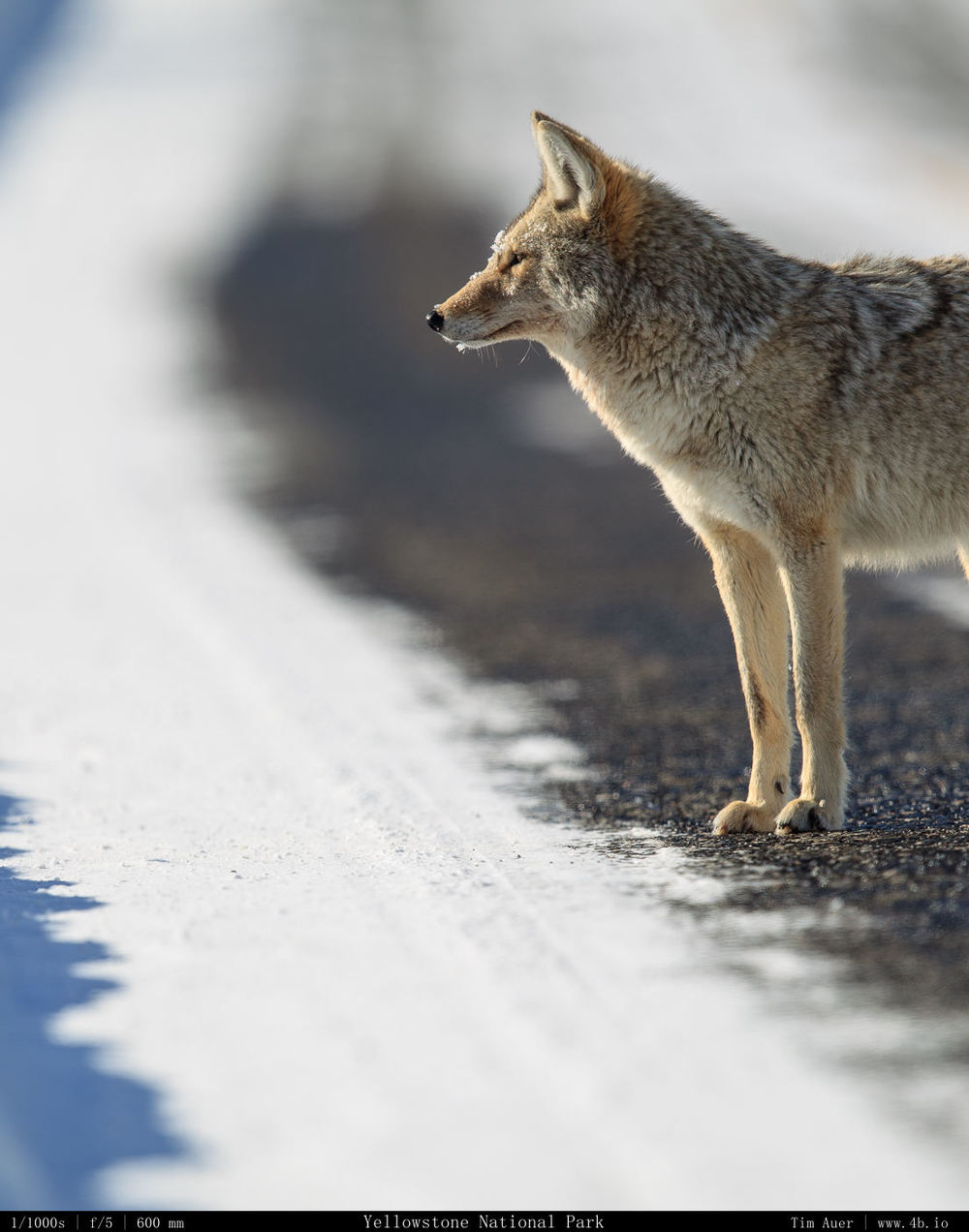
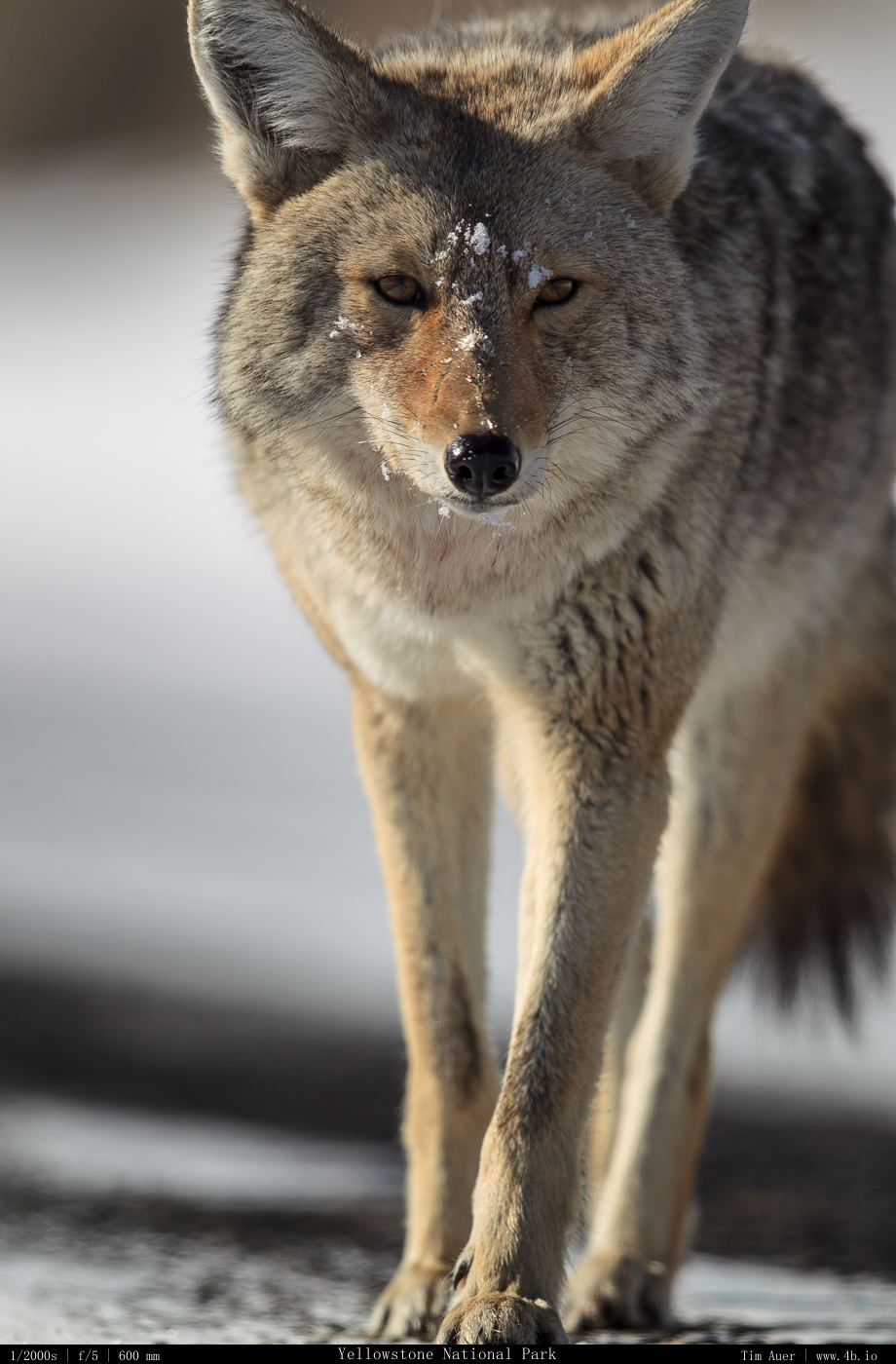
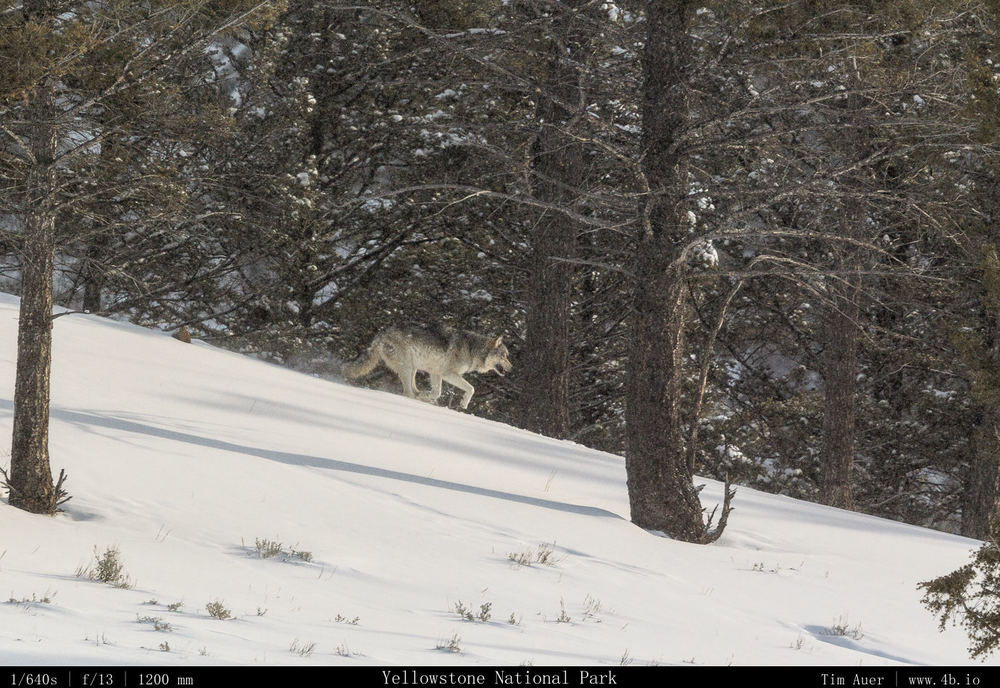

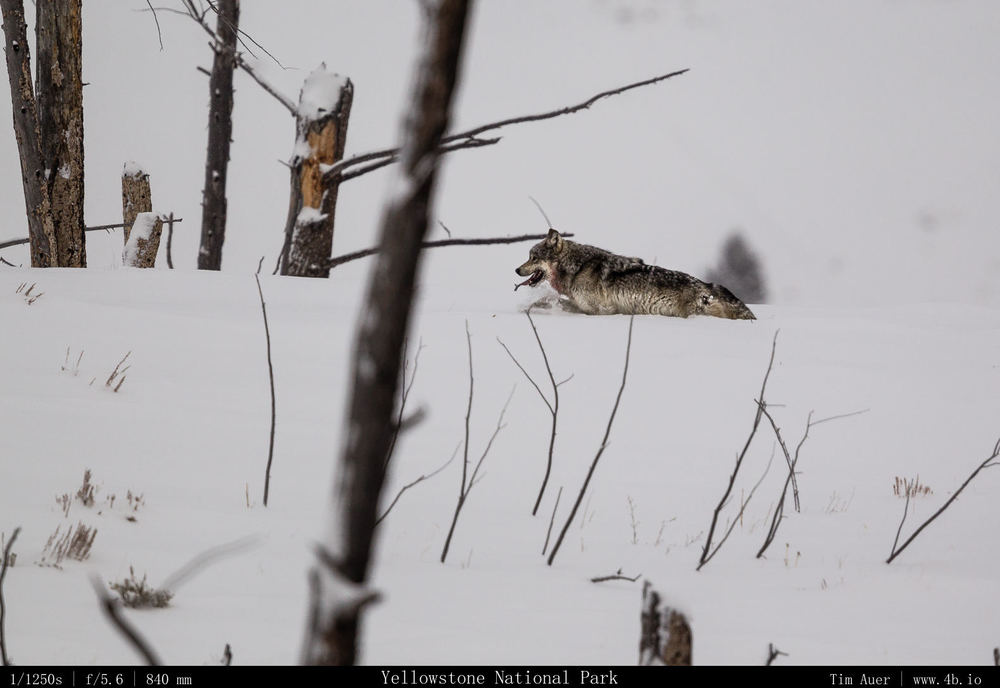
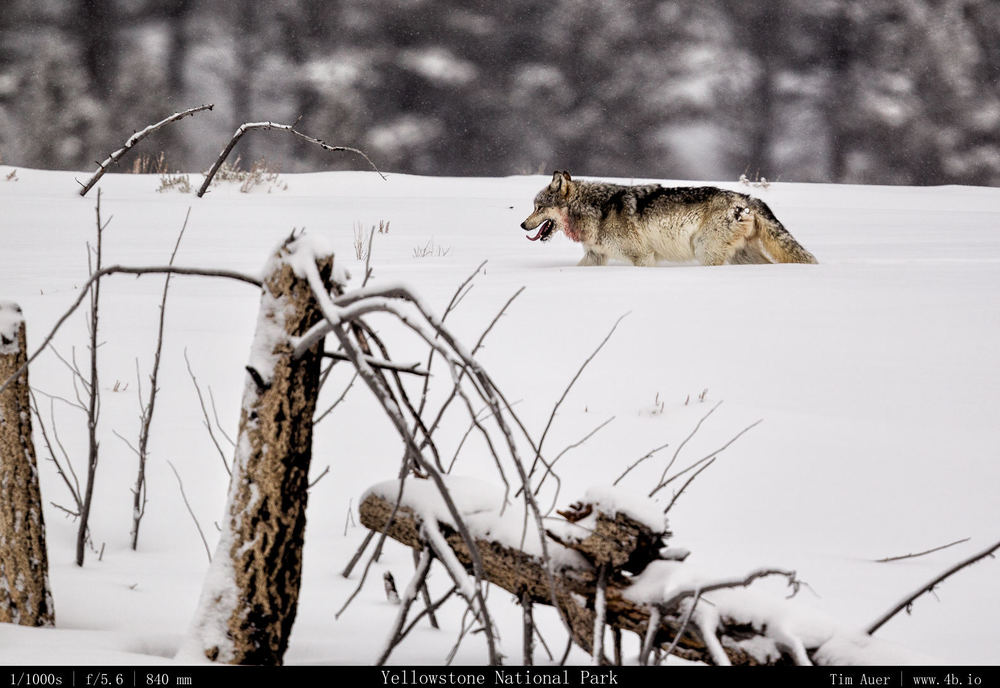
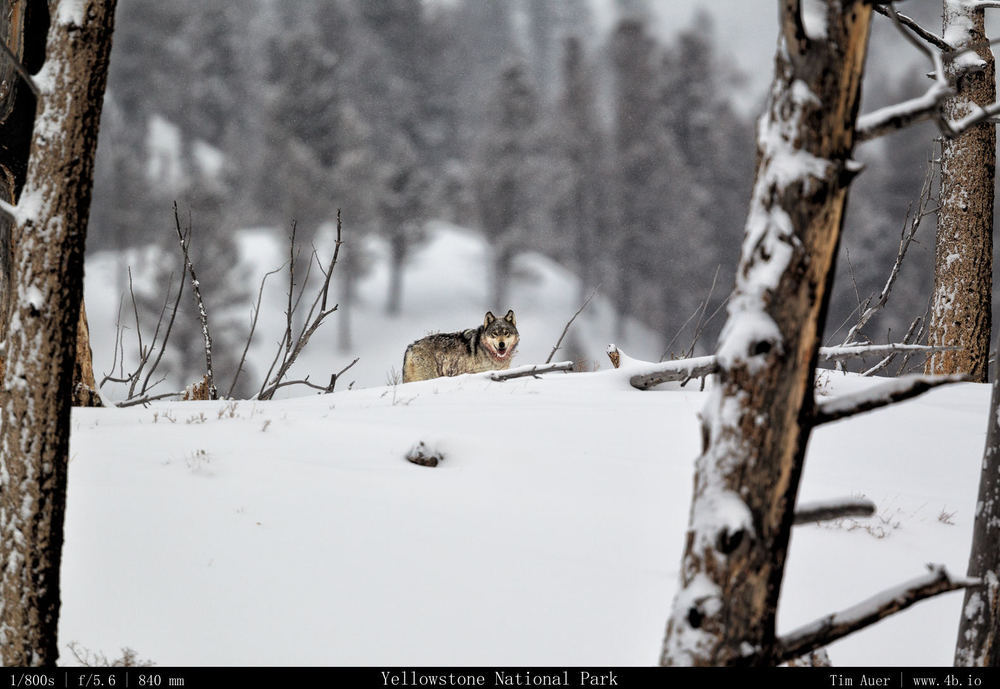
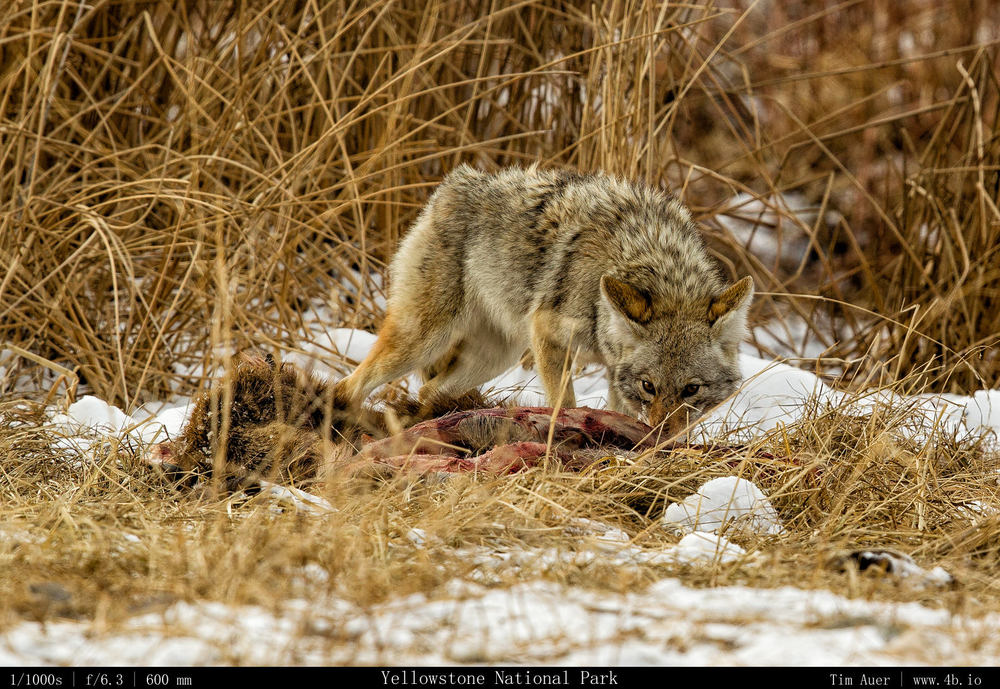




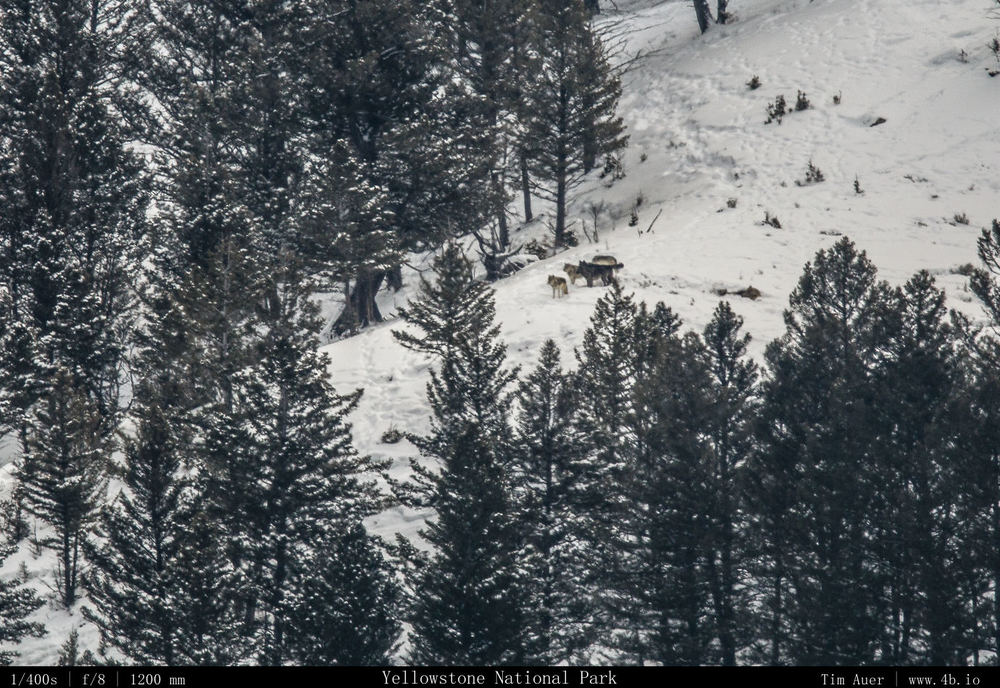
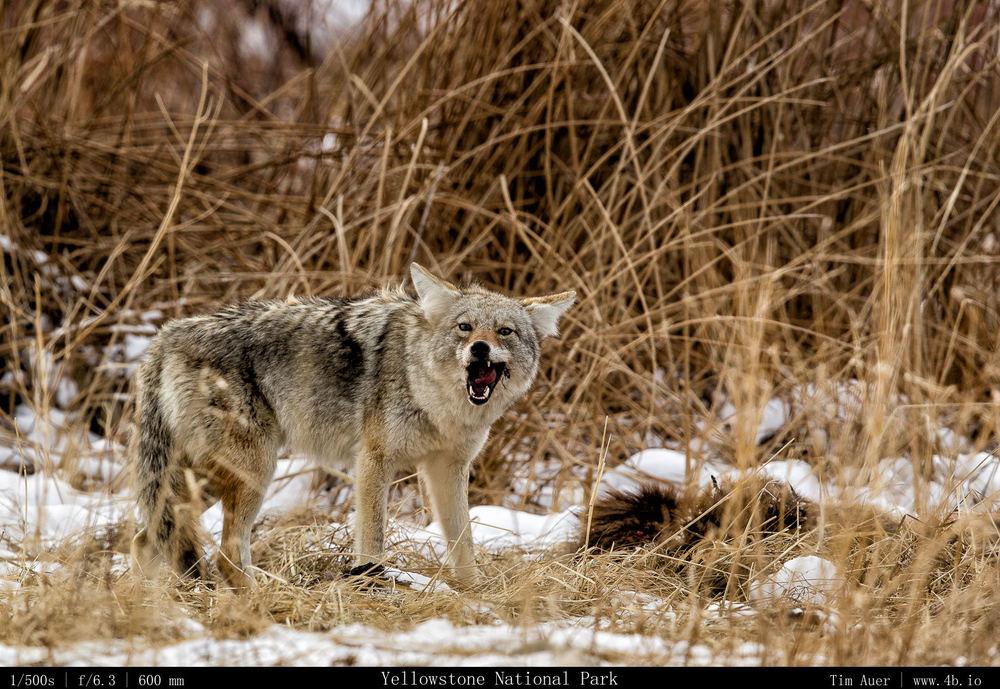

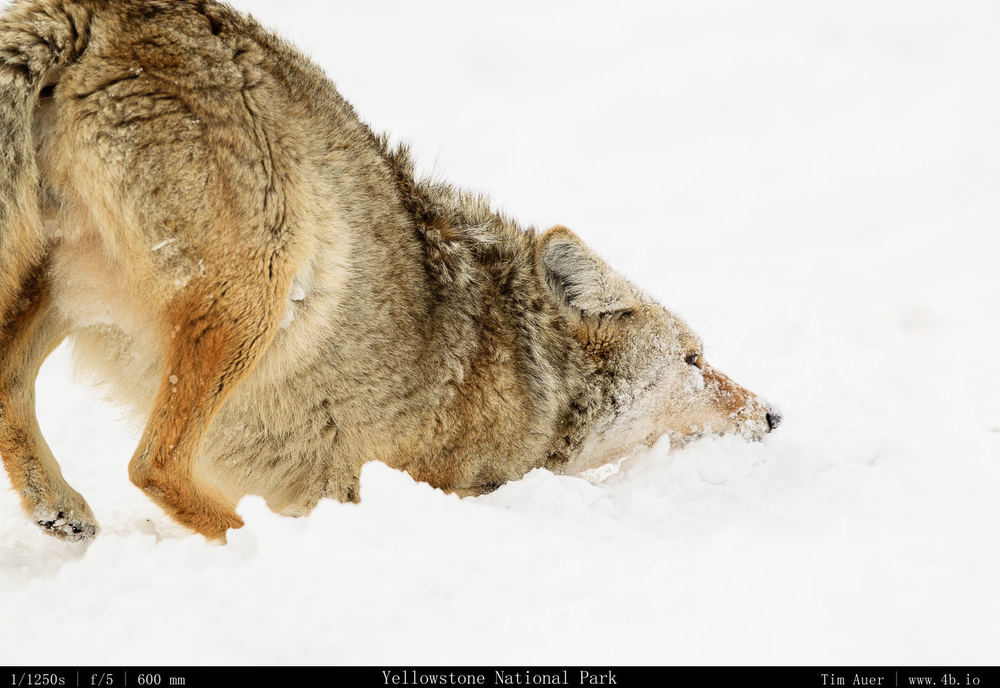
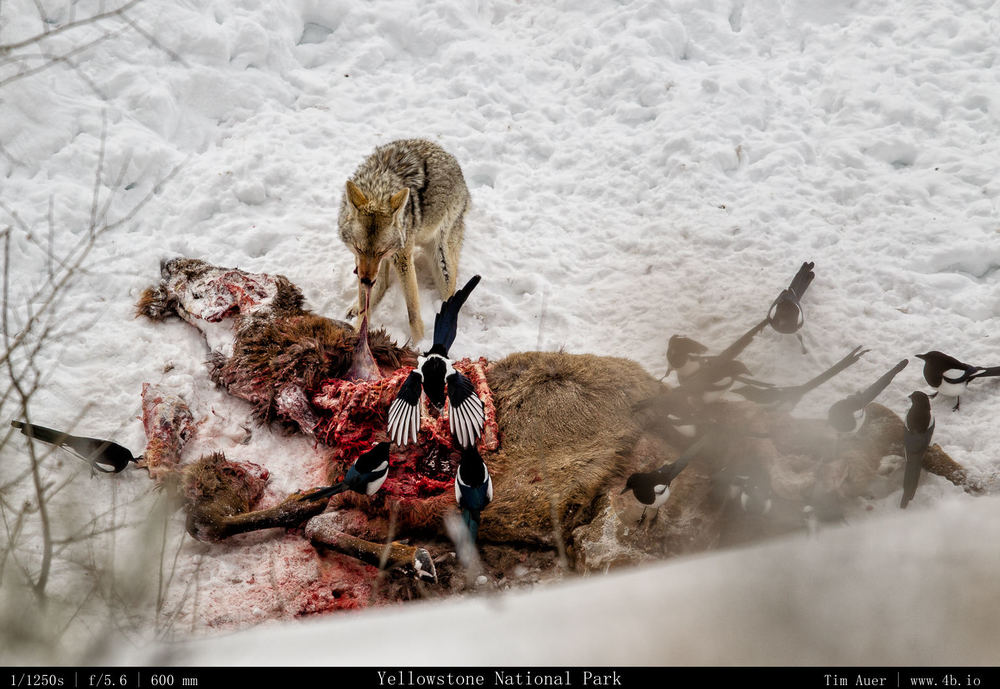

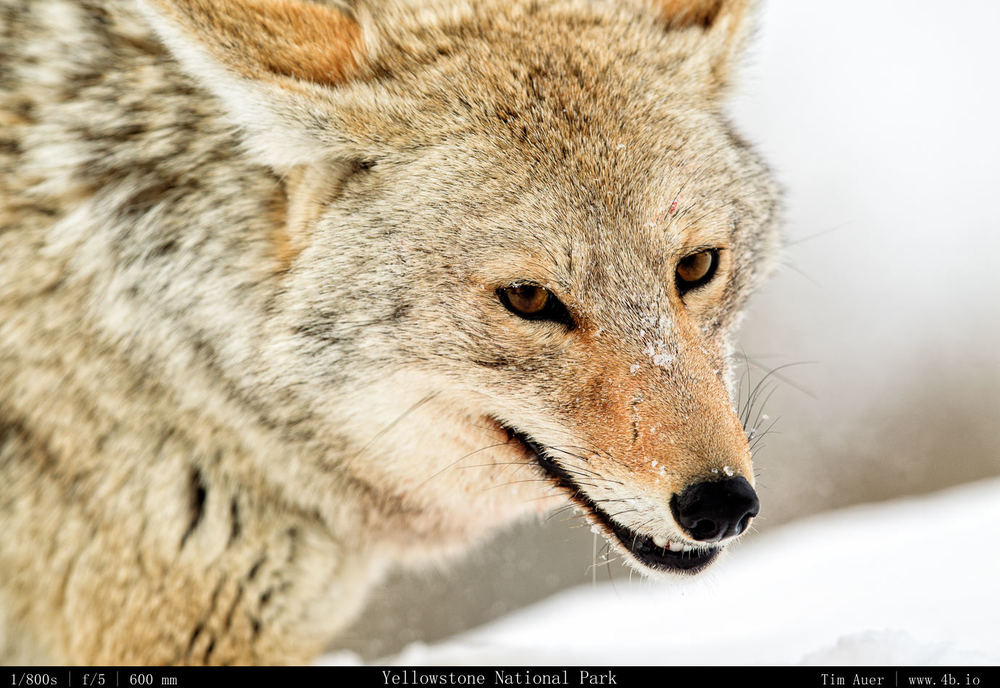
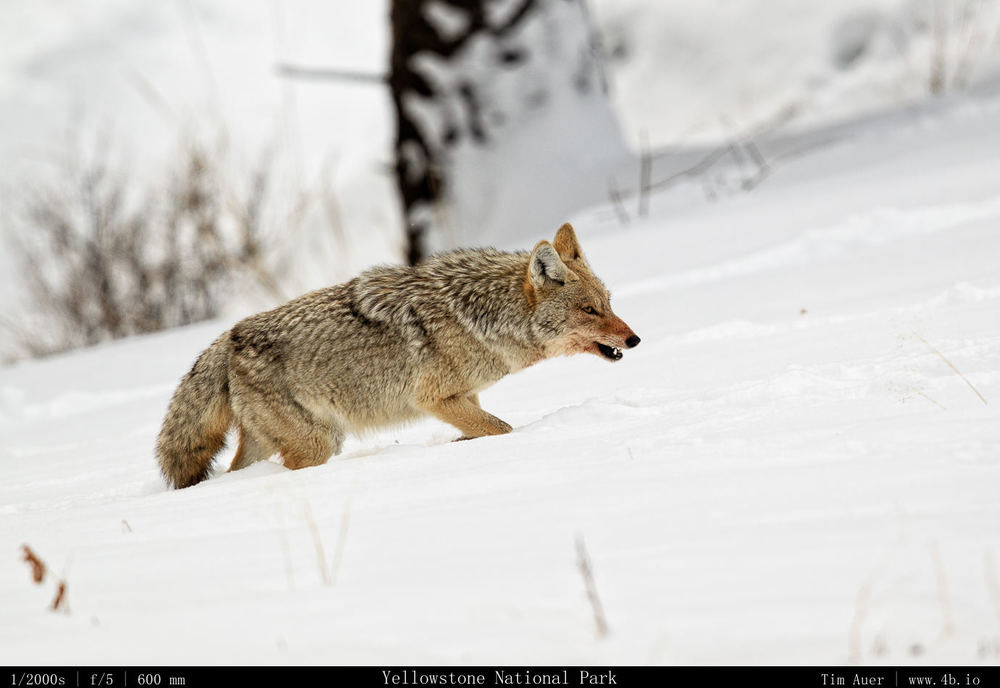
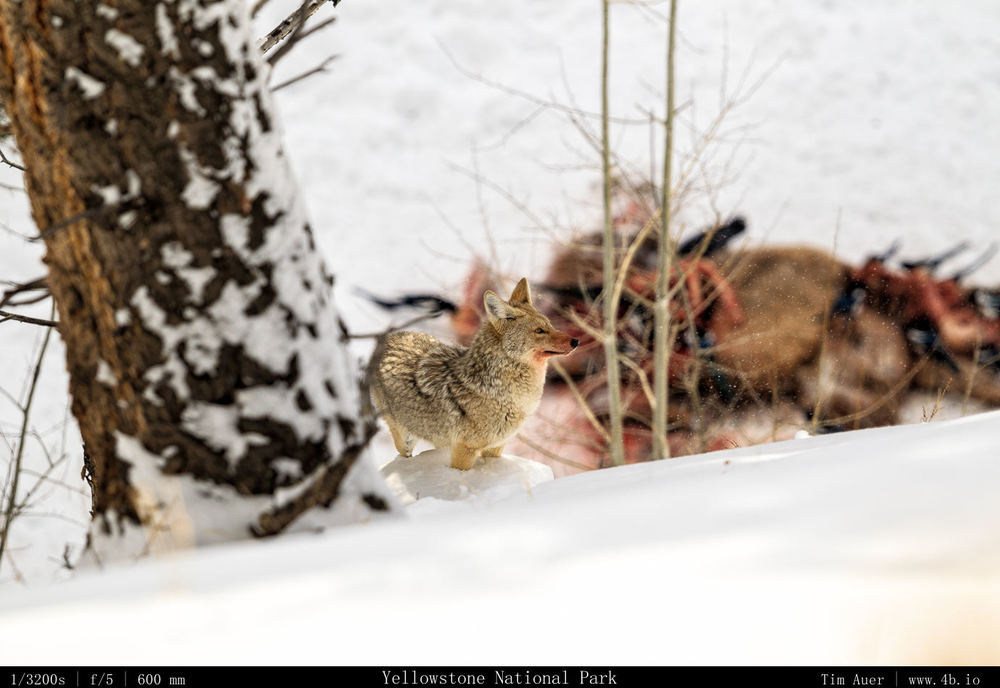
Yellowstone Winter 2014
Part 1: The Park
This winter’s trip to Yellowstone was a rewarding experience in terms of the abundance of wildlife, steamy landscapes and record breaking cold (lowest temperature was -56F)…
As the world’s first national park, a visit to Yellowstone in any season does not disappoint, but it is in the winter, when the temperatures typically drop to the lowest levels anywhere in the lower 48, that the park’s ecology and geology shine the brightest. And this trip, from an overall, top to bottom perspective, has been my most productive expedition in the last year.
In terms of my all-time favorite subjects, bears are still tops. But when I go on a bear-centric trip, it is such a demanding subject (physically and mentally), there is little room for much else…this was not the case in Yellowstone. This park does have its specialties, and I could have gone with a single focus, but, in my opinion, and at this point in my career/catalog, it is best enjoyed by thoroughly absorbing as much of the Yellowstone experience as possible.
The park, renowned for its abundant wildlife and extensive geothermal features (most extensive in the world), has at times been faulted for lacking the iconic vistas that define some of the other US national parks, such as Yosemite or Glacier. However, the ecological variety and ever-changing geothermal landscapes creates iconic scenes that may only last a moment. The trick is to be at the right spot, at the right moment to witness it.
Yellowstone is different, while it is true the famous views such as “Snake River Overlook“, “Gates of the Valley” or “Wild Goose Island” are not there, fleeting but profound images can be wrought from the Yellowstone landscape. And it is because of the fleeting nature of these scenes that make the resulting image more profound; it serves as a reminder of the Earth’s transient nature. In the words of Paul C, our snowmobile guide, the only constant in Yellowstone is change. On a geological scale, this is universally true everywhere, the earth’s surface is in constant flux. But on a human scale we rarely have the opportunity to witness this geological ballet. Yosemite Valley in California looks much the same now as it did when Ansel Adams first visited in 1916. Yellowstone on the other hand, with its massive magma chamber bubbling a scant 3 or 4 miles beneath the surface, changes noticeably on a daily basis. These types of geological changes to the earth are most apparent here than anywhere else in the world.
More so than most of the other parks, Yellowstone exercises all of the human senses. A photographer, who attempts to use imagery to communicate the Yellowstone experience is limited to the visual cues presenting. Many of the scenes contain stimuli that require a first hand encounter to understand and appreciate. Therefore, I tried my best to capture visual scenes that offer connections to your other senses…this is easier said than achieved…
What these photographs fail to capture and present to the viewer is the frigid air, the smells, the sounds, the rumbling, the vibrations, the mists, the howls, the grunts, and the silence that are uniquely available in Yellowstone, the most accessible of the snowbound American National Parks. While other of the snowy Parks have generally limited access during the winter, Yellowstone’s hundreds of miles of roads are almost fully accessible via snowmobile and snow coach while the northern section (Mammoth Terraces and Lamar Valley) is plowed and open to cars.
Next up….
YNP P2: The Wildlife
YNP P3: The People
